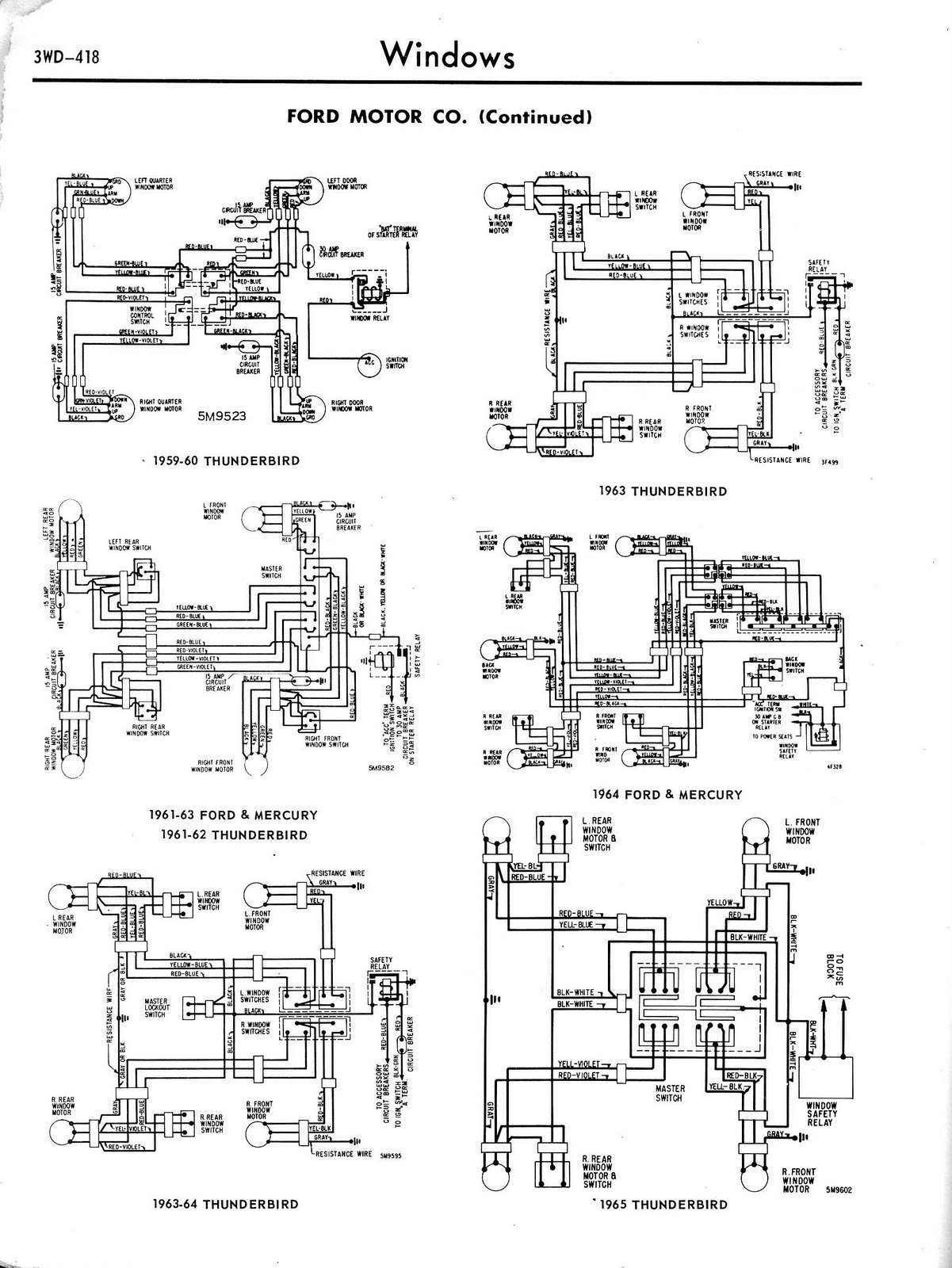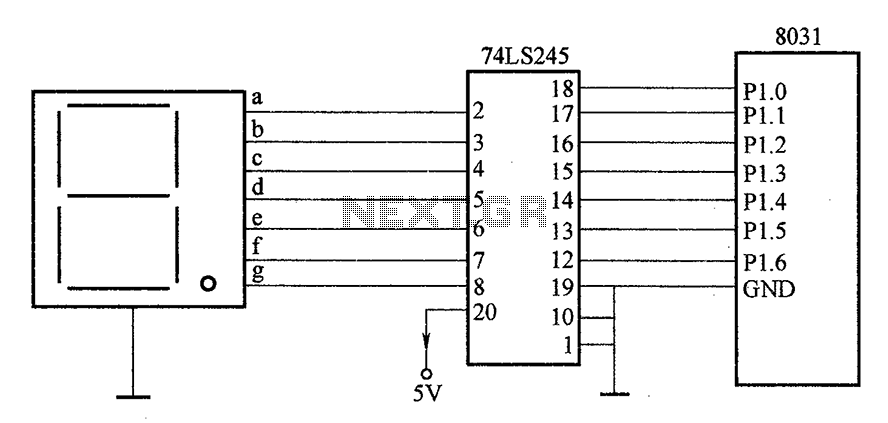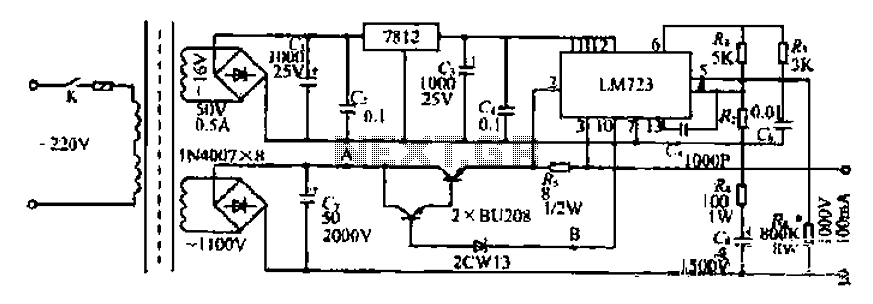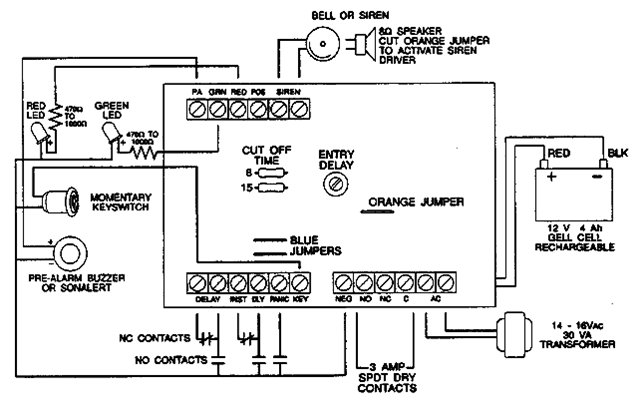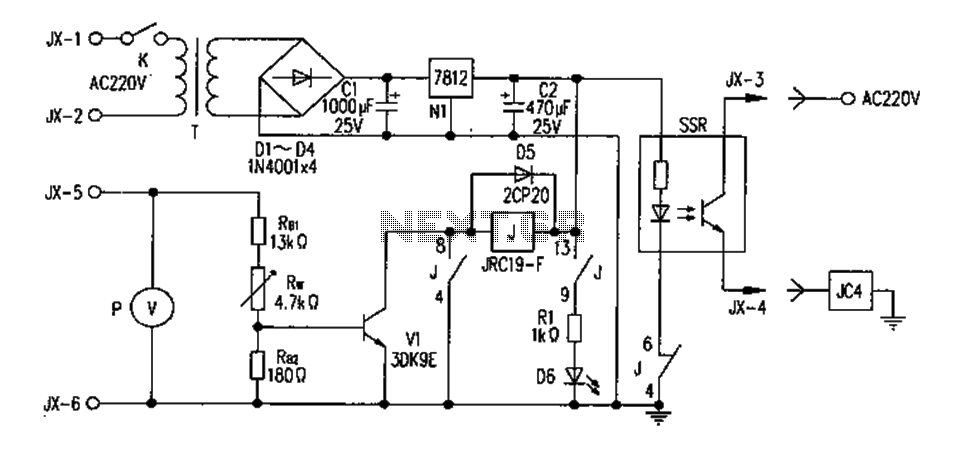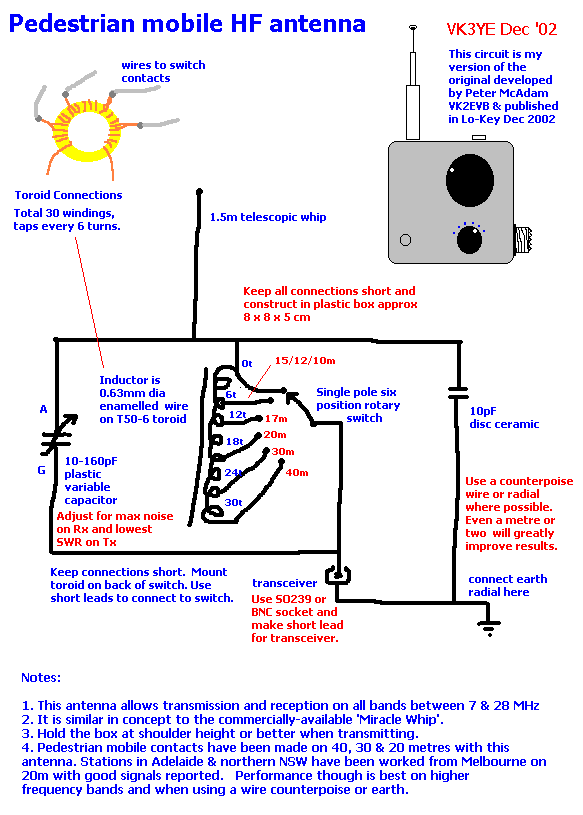
Toy Train rail detector circuit

This circuit must be used between the drive voltage of such a transformer and track. On JP1, the transformer is connected to JP2, the rails are connected to JP3, is a TTL "High" position when there is a tax on the trail is more of 2mA, but given the average LED more consumption, this should not be a problem. Works through a circuit voltage of 1.4 volts over the diodes, which are anti-parallel so that the circuit in both directions to use. More: This is always one of the two optocouplers ratified. Making it possible to find the inverters to see which side the train, of course, may be indicated by LEDs. But I had no purpose, so the OR gate at the end so I always have a "high" you which side the train also ascents. D1 to D4: 1N4001 R1: 40 Ohms (or near) R2, R3: 10 kOhm OC1, OC2: CNY17 or PC702 IC1: 74xx04 IC2: 74xx02
This circuit serves as a signal interface between a transformer and a track for train detection applications. The connection points JP1, JP2, and JP3 facilitate the integration of the transformer and the track with the circuit. The transformer is connected at JP1, while JP2 serves as a link to the control circuitry, and JP3 connects to the track rails.
The circuit is designed to recognize a TTL "High" signal when the current on the track exceeds 2 mA, which is sufficient for typical LED consumption, ensuring reliable operation. The design utilizes four diodes (D1 to D4) configured in an anti-parallel arrangement, allowing current flow in both directions through the circuit. This configuration is essential for applications where the direction of current may change, such as in a train detection system.
The diodes specified are 1N4001, which can handle the necessary current and voltage ratings. A resistor (R1) of approximately 40 Ohms is included to limit the current flowing through the circuit, protecting sensitive components from excessive current. Two additional resistors (R2 and R3), each rated at 10 kOhm, are used in the circuit likely for biasing or pull-up functions.
Optocouplers OC1 and OC2, either CNY17 or PC702, provide electrical isolation between the track and the control circuitry. This isolation is crucial to prevent any high voltages or transients on the track from affecting the control logic. The output of the optocouplers can be connected to an inverter (IC1: 74xx04) which may be used to invert the signal for further processing.
An OR gate (IC2: 74xx02) is employed at the output stage to ensure that a "High" signal is always produced when either side of the train is detected. This allows for a clear indication of train presence regardless of the direction of travel, facilitating the design of signaling or detection systems. The overall design is robust and suitable for applications in model train control systems or similar projects requiring reliable train detection.This circuit must be used between the drive voltage of such a transformer and track. On JP1, the transformer is connected to JP2, the rails are connected to JP3, is a TTL "High" position when there is a tax on the trail is more of 2mA, but given the average LED more consumption, this should not be a problem. Works through a circuit voltage of 1.4 volts over the diodes, which are anti-parallel so that the circuit in both directions to use.
This is always one of the two optocouplers ratified. Making it possible to find the inverters to see which side the train, of course, may be indicated by LEDs. But I had no purpose, so the OR gate at the end so I always have a "high" you which side the train also ascents.
D1 to D4: 1N4001 R1: 40 Ohms (or near) R2, R3: 10 kOhm OC1, OC2: CNY17 or PC702 IC1: 74xx04 IC2: 74xx02 🔗 External reference
This circuit serves as a signal interface between a transformer and a track for train detection applications. The connection points JP1, JP2, and JP3 facilitate the integration of the transformer and the track with the circuit. The transformer is connected at JP1, while JP2 serves as a link to the control circuitry, and JP3 connects to the track rails.
The circuit is designed to recognize a TTL "High" signal when the current on the track exceeds 2 mA, which is sufficient for typical LED consumption, ensuring reliable operation. The design utilizes four diodes (D1 to D4) configured in an anti-parallel arrangement, allowing current flow in both directions through the circuit. This configuration is essential for applications where the direction of current may change, such as in a train detection system.
The diodes specified are 1N4001, which can handle the necessary current and voltage ratings. A resistor (R1) of approximately 40 Ohms is included to limit the current flowing through the circuit, protecting sensitive components from excessive current. Two additional resistors (R2 and R3), each rated at 10 kOhm, are used in the circuit likely for biasing or pull-up functions.
Optocouplers OC1 and OC2, either CNY17 or PC702, provide electrical isolation between the track and the control circuitry. This isolation is crucial to prevent any high voltages or transients on the track from affecting the control logic. The output of the optocouplers can be connected to an inverter (IC1: 74xx04) which may be used to invert the signal for further processing.
An OR gate (IC2: 74xx02) is employed at the output stage to ensure that a "High" signal is always produced when either side of the train is detected. This allows for a clear indication of train presence regardless of the direction of travel, facilitating the design of signaling or detection systems. The overall design is robust and suitable for applications in model train control systems or similar projects requiring reliable train detection.This circuit must be used between the drive voltage of such a transformer and track. On JP1, the transformer is connected to JP2, the rails are connected to JP3, is a TTL "High" position when there is a tax on the trail is more of 2mA, but given the average LED more consumption, this should not be a problem. Works through a circuit voltage of 1.4 volts over the diodes, which are anti-parallel so that the circuit in both directions to use.
This is always one of the two optocouplers ratified. Making it possible to find the inverters to see which side the train, of course, may be indicated by LEDs. But I had no purpose, so the OR gate at the end so I always have a "high" you which side the train also ascents.
D1 to D4: 1N4001 R1: 40 Ohms (or near) R2, R3: 10 kOhm OC1, OC2: CNY17 or PC702 IC1: 74xx04 IC2: 74xx02 🔗 External reference
